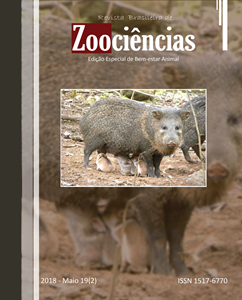Environmental enrichment for captive capuchin monkeys (Sapajus spp.) using natural material
DOI:
https://doi.org/10.34019/2596-3325.2018.v19.24767Resumo
Captive environments are always less complex than natural places, and consequently contain less stimuli for any animals within them, which may be stressful. One approach to reducing stress in captive animals is the application of environmental enrichment techniques. Capuchin monkeys are among the most common primates in captivity, therefore, evaluating the efficacy of environmental enrichment techniques for these species is important. In this study, we evaluated the effects of natural material as environmental enrichment for Sapajus spp. To do so, we compared the behavior of seven individuals when their enclosure was non-enriched and enriched with bamboo, leaf-litter and bromeliads. We found that capuchins reduced the frequency of body care activities and of affiliative interactions when environmentally enriching objects were placed in their enclosure. They also increased time spent in object manipulation and reduced observation of the environment during these periods. Of the three materials used, we consider bamboo the most efficient enrichment material, since it remained intact longer and so attracted capuchin attention for a more extended period, and significantly modified their behavior.



